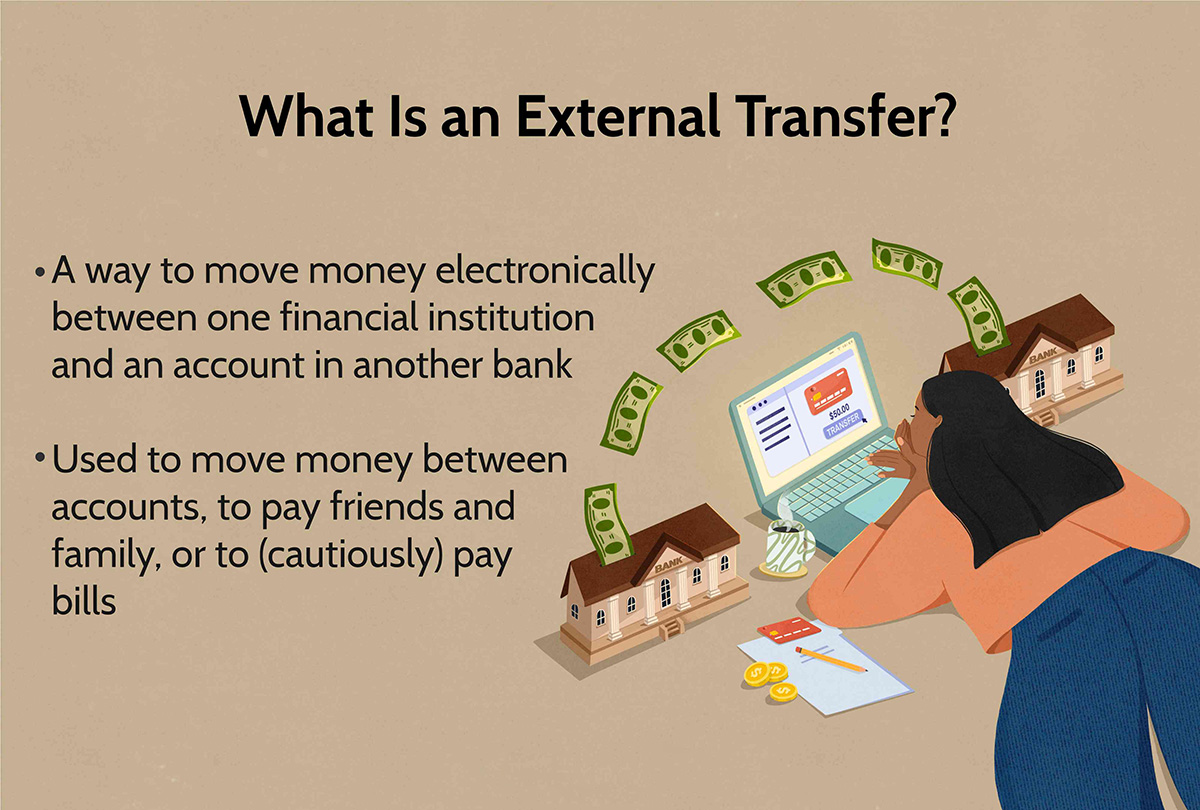

Finance
How To Start Credit Card Company
Modified: March 1, 2024
Learn the essential steps and strategies to launch your own credit card company in the lucrative finance industry. Discover the key insights from experts to succeed in this highly competitive market.
(Many of the links in this article redirect to a specific reviewed product. Your purchase of these products through affiliate links helps to generate commission for LiveWell, at no extra cost. Learn more)
Table of Contents
- Introduction
- Research and Market Analysis
- Legal and Regulatory Requirements
- Business Plan
- Funding and Capitalization
- Technology and Infrastructure
- Partnering with Financial Institutions
- Creating Credit Card Products and Services
- Marketing and Advertising Strategies
- Building Customer Base
- Risk Management and Compliance
- Customer Support and Services
- Future Growth and Expansion
- Conclusion
Introduction
Starting a credit card company can be an exciting and lucrative venture for those with a passion for finance and a keen eye for business opportunities. With the potential to earn significant profits and establish a reputable brand in the financial industry, it is no wonder that many entrepreneurs are considering entering this competitive market.
In today’s digital age, the demand for credit cards has reached new heights. Consumers rely on credit cards for daily transactions, online purchases, and even managing their personal finances. This presents a tremendous opportunity for aspiring entrepreneurs to tap into this market and provide innovative credit card solutions.
However, entering this industry requires careful planning and comprehensive research. From legal and regulatory requirements to creating credit card products and marketing strategies, there are numerous factors that need to be considered to ensure a successful launch and sustainable growth of your credit card company.
This article will guide you through the essential steps and considerations to start your credit card company. From conducting market research to establishing technology infrastructure and building a customer base, we will explore the key aspects that will contribute to the success of your venture. Whether you have prior experience in the financial industry or are starting from scratch, this article will help you navigate the intricacies of starting a credit card company.
Before we delve into the details, it is important to note that starting a credit card company is a complex process that requires a deep understanding of finance, legal regulations, and risk management. It is advisable to consult with legal and financial professionals to ensure compliance and mitigate risks during the startup phase and beyond.
Now, let’s explore the steps and strategies involved in starting and growing your credit card company.
Research and Market Analysis
Before diving into the process of starting a credit card company, thorough research and market analysis are essential. This step will help you understand the current market landscape, identify your target audience, and assess the competition.
Begin by analyzing the demand for credit cards in your target market. Look at factors such as consumer spending habits, income levels, and the presence of major financial institutions. This will give you valuable insights into the potential market size, growth opportunities, and the feasibility of launching a credit card company in your chosen geography.
Next, evaluate your competition. Identify other credit card companies operating in the market and study their products, pricing strategies, marketing tactics, and customer base. This analysis will help you position your own credit card offerings competitively and differentiate yourself from existing players.
Additionally, consider the regulatory environment and legal requirements associated with the credit card industry. Familiarize yourself with consumer protection laws, data security regulations, and compliance frameworks to ensure that your credit card company operates within the boundaries of the law.
Furthermore, conduct a comprehensive SWOT analysis (Strengths, Weaknesses, Opportunities, and Threats) to assess your own capabilities and identify areas for improvement. Understanding the strengths and weaknesses of your credit card company will enable you to leverage your unique selling points and address any potential challenges.
Market research can be conducted through surveys, focus groups, interviews, and data analysis. Utilize both primary and secondary research methods to gather insights about consumer preferences, market trends, and emerging technologies.
By conducting thorough research and market analysis, you can gain a clear understanding of the industry landscape and make informed decisions about your credit card company’s positioning, target audience, and competitive advantage. This knowledge will serve as a foundation for your business plan and subsequent steps in starting and growing your credit card company.
Legal and Regulatory Requirements
When starting a credit card company, it is crucial to understand and comply with the legal and regulatory requirements governing the industry. These regulations are in place to protect consumers and ensure fair practices within the financial sector.
Firstly, you need to determine the legal structure of your credit card company. Consult with a business attorney to help you choose between a sole proprietorship, partnership, limited liability company (LLC), or corporation. Each structure has its own legal and tax implications, so it is important to select the one that aligns with your specific business goals and financial situation.
Next, you will need to apply for the necessary licenses and permits to operate a credit card company. This may include obtaining a financial institution license, a money transmitter license, or a payment services license, depending on the jurisdiction in which you plan to operate. Additionally, you may need to register with government regulatory bodies such as the Consumer Financial Protection Bureau (CFPB) in the United States.
It is also important to comply with consumer protection laws and data security regulations. Establish robust measures to protect the personal and financial information of your cardholders, and ensure compliance with laws like the Payment Card Industry Data Security Standard (PCI DSS).
Another important aspect of compliance is anti-money laundering (AML) regulations. Develop and implement policies and procedures to detect and prevent money laundering and terrorist financing activities. This may involve performing customer due diligence, conducting ongoing monitoring, and reporting suspicious transactions to the relevant authorities.
Additionally, familiarize yourself with fair lending laws and regulations, which prohibit discrimination in lending practices based on factors such as race, gender, age, and disability. Complying with fair lending laws is crucial to maintaining a socially responsible and ethical credit card company.
As regulations within the credit card industry are subject to change, it is essential to stay updated and adapt your compliance practices accordingly. Consider partnering with legal experts or consultants who specialize in financial regulations to ensure ongoing compliance and mitigate legal and reputational risks.
By understanding and adhering to the legal and regulatory requirements of the credit card industry, you can establish a solid foundation for your company’s operations and build trust with your customers and financial partners.
Business Plan
Creating a comprehensive business plan is crucial when starting a credit card company. A well-crafted business plan serves as a roadmap, outlining your company’s objectives, strategies, and financial projections.
Start by defining your company’s mission and vision. What is the purpose of your credit card company? What unique value will you bring to the market? Clearly articulate your goals and aspirations to establish a strong foundation for your business.
Next, conduct a thorough analysis of the market and competition as discussed earlier. Identify your target market segment and understand their needs, preferences, and pain points. This will enable you to develop credit card products and services that cater to their specific requirements.
Outline your marketing and sales strategies in your business plan. How will you promote your credit card products and attract customers? Consider utilizing various channels such as digital marketing, partnerships with businesses and financial institutions, and targeted advertising campaigns.
When it comes to the financial aspects of your business plan, include detailed projections for revenue, expenses, and profitability. Consider factors such as the cost of acquiring customers, credit card processing fees, and overhead expenses such as technology infrastructure and customer support. Additionally, assess the potential risks and challenges that could impact your financial performance and outline strategies to mitigate them.
Outline the organizational structure of your credit card company, including key roles and responsibilities. Consider the expertise and experience required for each position, and plan for any necessary hires or external partnerships.
Furthermore, consider the scalability and growth potential of your credit card company. How do you plan to expand your customer base, introduce new credit card products, or enter new markets? Think about long-term strategies for sustainable growth and profitability.
Lastly, include a financial analysis section that highlights your projected return on investment (ROI) and financial milestones. This will provide potential investors or lenders with the information they need to evaluate the viability of your credit card company.
A business plan should be a living document, regularly updated as your credit card company evolves and new opportunities emerge. It is a tool to guide your decision-making process and communicate your vision to stakeholders, including investors, partners, and employees.
Funding and Capitalization
Securing adequate funding is essential for launching and growing your credit card company. Determining the capital requirements and sourcing funds will play a major role in the success of your venture.
Start by estimating the initial investment required to set up your credit card company. Consider expenses such as technology infrastructure, licensing fees, legal and regulatory compliance costs, marketing and advertising, and personnel expenses. Additionally, factor in a buffer for unforeseen expenses and operating costs for the initial months of operation.
Once you have determined the capital requirements, explore various funding options. One common route is to seek investors who are interested in the financial services industry. These investors can provide the necessary capital in exchange for equity in your credit card company.
If venture capital or angel investors are not feasible, you can also consider traditional financing options such as bank loans or lines of credit. Do thorough research on the financial institutions that are open to lending to credit card startups and prepare a strong loan application package that includes a detailed business plan and financial projections.
Another option is to explore grants or funding programs offered by government agencies or organizations supporting entrepreneurship and innovation. These sources may provide a non-dilutive form of funding to help you kick-start your credit card company.
It is important to note that starting a credit card company often requires significant capital due to the regulatory and operational complexities involved. Ensure that you have a realistic understanding of the funding required and develop a comprehensive financial plan to demonstrate to potential investors or lenders how you plan to achieve profitability and generate a return on their investment.
In addition to external funding, consider personal investment or funds from family and friends. Contributing your own capital shows your commitment to the venture and may give potential investors or lenders more confidence in the viability of your credit card company.
Capitalization also involves determining the ownership structure of your credit card company. Decide how much equity you are willing to give up in exchange for funding and strategize how you will allocate ownership among co-founders or key stakeholders.
Ultimately, the funding and capitalization strategy will vary depending on the specific needs and circumstances of your credit card company. Careful planning and research will help you secure the necessary funds to turn your vision into reality.
Technology and Infrastructure
In today’s digital age, technology plays a critical role in the success of any credit card company. Building a robust and scalable technology infrastructure is essential to support your operations, ensure data security, and provide a seamless user experience for your cardholders.
Firstly, consider the core banking system that will serve as the backbone of your credit card operations. This system should have the capability to handle account management, transaction processing, and cardholder data securely and efficiently. Evaluate different technology providers and choose a system that is specifically designed for credit card management.
Integration with payment processing networks is crucial for a credit card company. Connect with payment gateways and processors to enable real-time authorization and settlement of transactions. This integration should comply with industry standards such as Payment Card Industry Data Security Standard (PCI DSS) to ensure the security of cardholder data.
Invest in robust data security measures to protect sensitive customer information. Implement encryption technology, firewalls, and intrusion detection systems to safeguard against unauthorized access. Regularly conduct security audits and assessments to identify and mitigate potential vulnerabilities.
Additionally, develop a user-friendly and secure web and mobile platform for cardholders to access their account information, make payments, and view transaction history. Consider building a responsive and intuitive interface that provides a seamless experience across multiple devices and platforms.
Automation is an important aspect of the technological infrastructure of your credit card company. Implement workflows and processes that streamline and automate tasks such as credit card application processing, underwriting, and customer onboarding. This will improve operational efficiency and reduce manual errors.
Consider the scalability of your technology infrastructure as your credit card company grows. Plan for future expansion by ensuring that your systems can handle increased transaction volumes and accommodate new products or services.
Depending on the size and complexity of your credit card company, you may need to establish a dedicated IT team or outsource technology services to third-party providers. Ensure that the team has the necessary technical skills and expertise to manage and maintain your technology infrastructure effectively.
Regularly invest in technology upgrades and stay abreast of emerging technologies and industry trends. This will enable you to stay competitive and offer innovative solutions to your cardholders.
In summary, building a strong technology infrastructure is essential for the success and growth of your credit card company. Investing in robust systems, data security, automation, and user-friendly interfaces will position your company as a trusted provider in the digital financial landscape.
Partnering with Financial Institutions
Partnering with established financial institutions can be a strategic move for your credit card company. Collaborating with banks or other financial organizations can provide numerous benefits, including access to their customer base, expertise, and infrastructure.
One of the key benefits of partnering with financial institutions is gaining access to their existing customer base. Banks and credit unions have large customer networks, and by partnering with them, you can leverage their customer relationships to acquire new cardholders. This can significantly expedite the growth of your credit card company and increase the adoption of your credit card products.
Financial institutions also bring valuable expertise and industry knowledge to the table. They have a deep understanding of regulatory requirements, risk management practices, and industry best practices. Partnering with them can provide you with insights and guidance to navigate the complexities of the credit card industry.
Infrastructure is critical for the smooth operation of a credit card company. Many financial institutions already have robust technology systems, payment processing capabilities, and compliance frameworks in place. By leveraging their infrastructure, you can accelerate your time to market and avoid the costs and complexities associated with building these capabilities from scratch.
Furthermore, partnering with financial institutions can lend credibility and legitimacy to your credit card company. Being associated with a reputable bank or financial organization can build trust among potential cardholders and can enhance your brand image.
When seeking partnerships with financial institutions, it is important to carefully evaluate potential partners. Consider factors such as their reputation, customer demographics, and their willingness to work with a credit card startup. Look for institutions that align with your company’s values and have a collaborative mindset.
Develop a compelling value proposition that outlines what your credit card company brings to the table in the partnership. Highlight your unique selling points, such as innovative credit card features, customer-centric approach, or technological advancements.
Engage in discussions with potential partners to explore mutually beneficial arrangements. This may include revenue-sharing models, co-branding arrangements, or joint marketing initiatives. Ensure that the terms and conditions of the partnership are clearly defined and mutually agreed upon to establish a solid foundation for the collaboration.
Collaborating with financial institutions can unlock growth opportunities and provide a strong foundation for your credit card company. By leveraging their customer base, expertise, and infrastructure, you can accelerate your business growth and establish a competitive position in the market.
Creating Credit Card Products and Services
Creating innovative and customer-centric credit card products and services is crucial for differentiating your credit card company in the competitive market. By offering unique features and benefits, you can attract and retain cardholders, increase customer loyalty, and drive revenue growth.
Firstly, define your target market and understand their needs, preferences, and pain points. This market research will help you tailor your credit card products and services to meet the specific requirements of your target audience.
Consider offering a range of credit card products to cater to different customer segments. This may include basic credit cards, reward credit cards, cashback cards, travel cards, or specialized cards for particular industries or affinity groups. Providing a diverse portfolio of credit card options will attract a wider range of customers and increase your market reach.
When designing the features and benefits of your credit cards, consider what sets them apart from competitors. Think about unique rewards programs, exclusive partnerships, or innovative security features that will entice customers to choose your cards over others.
Ensure that your credit card products are aligned with consumer expectations and industry trends. With advancements in technology, consider offering contactless payments, mobile wallet integration, and enhanced online card management tools. These features will enhance the convenience and user experience of your cardholders.
Implement clear and transparent terms and conditions for your credit card products, including interest rates, fees, and repayment options. Avoid complex structures or hidden charges that can lead to customer dissatisfaction. Provide educational resources and tools to help cardholders understand how to use their credit cards responsibly.
Customer service is a crucial aspect of credit card products and services. Develop a comprehensive customer support strategy that includes multiple channels for inquiries and dispute resolutions. Timely and efficient customer service will contribute to a positive cardholder experience and foster long-term loyalty.
Consider partnering with merchants and businesses to offer exclusive discounts, promotions, or cashback incentives specific to your credit cardholders. These partnerships can drive card usage and increase customer engagement. Develop a strong merchant acquisition strategy to onboard key partners that align with your credit card brand and target market.
Regularly evaluate the performance of your credit card products and services. Monitor customer feedback, review usage patterns, and assess profitability. Use this data to iterate and improve your offerings, ensuring that they remain competitive and relevant in an evolving market.
Creating compelling and customer-centric credit card products and services requires a deep understanding of your target market and their evolving needs. By delivering unique features, excellent customer service, and transparent terms, you can establish a strong position in the credit card industry and drive customer loyalty.
Marketing and Advertising Strategies
Effective marketing and advertising strategies are crucial for promoting your credit card company and acquiring new cardholders. By implementing targeted and creative marketing campaigns, you can increase brand awareness, attract potential customers, and drive card usage.
Start by defining your target audience and understanding their characteristics, behaviors, and preferences. This will allow you to tailor your marketing messages and tactics to resonate with your intended audience.
Digital marketing plays a significant role in today’s marketing landscape. Develop a strong online presence through search engine optimization (SEO) techniques, paid advertising, and social media marketing. Optimize your website to rank high in search engine results and ensure that it provides a seamless user experience. Leverage social media platforms to engage with your target audience, share content, and run targeted advertising campaigns.
Consider investing in affiliate marketing programs to expand your reach and acquire customers through partnerships with influential bloggers, content creators, or financial websites. These affiliates can promote your credit card products and services to their audience, driving traffic to your website and increasing your chances of acquiring new cardholders.
Utilize content marketing strategies to educate and engage your target audience. Publish informative articles, blog posts, or videos that provide valuable insights and tips related to personal finance, credit card usage, and financial goals. By offering valuable content, you can build credibility and establish your brand as an authority in the industry.
Personalization is key in marketing credit card products. Segment your audience based on demographics, spending habits, or interests and create tailored marketing messages. Use data analytics to understand customer behavior and preferences, allowing you to deliver targeted offers and promotions that are relevant to each customer segment.
Leverage email marketing campaigns to nurture relationships with prospective and existing cardholders. Develop personalized email sequences to educate potential customers about the benefits of your credit cards and encourage them to sign up. For existing cardholders, send targeted emails with relevant offers, loyalty programs, and updates on new features or promotions.
Consider traditional marketing channels as well, such as direct mail, radio, or television advertising, depending on the demographics and preferences of your target audience. Develop compelling and engaging creatives that highlight the unique value of your credit card products and services.
Build strategic partnerships with financial influencers, bloggers, or media outlets to gain exposure and generate buzz around your credit card company. Collaborate on content creation, sponsor events, or participate in industry conferences to showcase your expertise and connect with potential customers.
Monitor and measure the results of your marketing campaigns using key performance indicators (KPIs). Analyze metrics such as customer acquisition cost, conversion rates, and customer lifetime value to assess the effectiveness of your strategies. Use this data to optimize your marketing efforts and refine your messaging.
Remember to comply with advertising regulations and guidelines set forth by regulatory bodies in your target market. Ensure that your marketing materials accurately represent the features and benefits of your credit card products and adhere to all legal requirements.
By implementing a strategic and multi-channel marketing approach, you can effectively promote your credit card company, attract new cardholders, and build a strong brand presence in the market.
Building Customer Base
Building a strong and loyal customer base is essential for the long-term success of your credit card company. By implementing effective customer acquisition and retention strategies, you can attract new cardholders and foster lasting relationships with your existing customers.
Start by clearly defining your target audience and understanding their needs, motivations, and preferences. Develop customer personas that encompass their demographics, financial goals, and spending behaviors. This will help you tailor your marketing and customer acquisition efforts to attract the right customers.
Utilize targeted marketing campaigns to reach your desired audience. Leverage digital marketing strategies such as search engine optimization (SEO), paid advertising, and social media advertising to raise awareness about your credit card offerings. Create compelling content and engaging creatives that highlight the unique benefits and features of your cards to attract potential customers.
Offer incentives and rewards to encourage customers to choose your credit cards. Consider providing sign-up bonuses, cashback offers, or loyalty programs that resonate with your target audience. These incentives can incentivize potential customers to apply for your credit cards and can also retain existing customers.
Seamless and user-friendly application processes are crucial for customer acquisition. Streamline your credit card application process, minimize paperwork, and incorporate automation to ensure a hassle-free and speedy experience for applicants. Simplify the eligibility criteria and clearly communicate the required documentation and qualifications.
Establish strategic partnerships with businesses and organizations that align with your target market. Offer co-branded credit cards that provide exclusive benefits or rewards for customers of partner companies. Collaborating with popular brands or industry leaders can significantly boost your visibility and attract customers who are loyal to those brands.
Provide exceptional customer service at every touchpoint. Invest in a knowledgeable and responsive customer support team that can assist customers with their inquiries, concerns, or issues promptly. A positive customer service experience can strengthen customer loyalty and increase the chances of positive word-of-mouth referrals.
Actively engage with your customers through various channels. Leverage social media platforms, email marketing, and personalized communications to stay connected and build relationships. Regularly update customers on new offers, rewards, or enhancements to your credit card products to keep them engaged and interested.
Monitor customer satisfaction and feedback to continuously improve your products and services. Encourage customers to provide feedback through surveys, reviews, or interactive feedback platforms. Actively address their concerns and suggestions to demonstrate your commitment to meeting their needs and expectations.
Implement referral programs to incentivize existing customers to refer their friends and family to your credit card company. Offering referral bonuses or rewards can drive organic growth and expand your customer base.
Regularly analyze customer data and behavioral patterns to identify trends and opportunities. Utilize data analytics to segment customers and tailor your marketing efforts more effectively. Customize offers and promotions based on individual customer preferences and spending behaviors.
Building a customer base is an ongoing process that requires continuous effort and optimization of your strategies. With a customer-centric approach, personalized experiences, and a focus on customer satisfaction, you can foster loyalty and drive growth for your credit card company.
Risk Management and Compliance
Risk management and compliance are critical aspects of operating a credit card company. To ensure the long-term success and sustainability of your business, it is essential to implement robust risk management practices and comply with regulatory requirements.
Identify and assess potential risks that may affect your credit card company. This can include credit risk, fraud risk, operational risk, legal and regulatory risk, and reputational risk. Develop risk mitigation strategies and procedures to minimize the impact of these risks on your business.
Adhere to regulatory requirements and standards set forth by governing bodies such as the Consumer Financial Protection Bureau (CFPB), financial regulatory authorities, and industry organizations. Stay updated on changes in laws and regulations related to the credit card industry and ensure compliance with data protection, anti-money laundering (AML), and consumer protection regulations.
Establish a comprehensive compliance management system to monitor and ensure adherence to applicable laws and regulations. This includes implementing policies and procedures, conducting regular compliance training for employees, and establishing internal reporting mechanisms to address any compliance concerns or issues.
Protect cardholder data and maintain the highest standards of data security. Implement robust cybersecurity measures to safeguard sensitive information, including encryption, secure data storage, and regular security audits. Comply with standards such as the Payment Card Industry Data Security Standard (PCI DSS) to ensure the secure transmission and storage of cardholder data.
Implement fraud prevention measures to protect your credit card company and your customers. This may involve implementing early warning systems, monitoring transactions for suspicious activities, and having procedures in place for reporting and investigating potential fraud instances. Educate your customers on ways to protect themselves from fraud and regularly communicate with them about the latest security practices.
Develop a comprehensive risk management framework that includes regular risk assessments, risk monitoring, and risk mitigation strategies. Establish key performance indicators (KPIs) and metrics to track and measure risk exposures and the effectiveness of risk management practices.
Establish internal controls and governance procedures that promote transparency, accountability, and ethical practices within your credit card company. This includes implementing segregation of duties, conducting regular internal audits, and maintaining proper documentation of all processes and transactions.
Stay informed about emerging risks and industry trends. Continuously assess and update your risk management and compliance practices to adapt to evolving regulations and markets. Engage with industry associations, attend conferences, and establish relationships with peers to stay ahead of regulatory changes and best practices.
Regularly communicate with your employees, partners, and stakeholders about the importance of risk management and compliance. Develop a culture of compliance and ethical behavior within your credit card company to ensure that all members of your team understand their role in maintaining a secure and compliant operating environment.
By prioritizing risk management and compliance, you can protect your business, uphold the trust of your customers, and navigate the complex regulatory landscape of the credit card industry successfully.
Customer Support and Services
Providing exceptional customer support and services is essential for establishing long-term relationships with your cardholders and maintaining customer satisfaction. A positive customer experience can drive customer loyalty, increase card usage, and contribute to the overall success of your credit card company.
First and foremost, ensure that you have a dedicated customer support team that is well-trained, knowledgeable, and responsive. They should possess in-depth knowledge about your credit card products, benefits, and policies, and be able to assist customers with any inquiries, concerns, or issues they may have.
Offer multiple channels for customers to reach your support team, including phone, email, live chat, and social media platforms. This allows customers to choose the channel they are most comfortable with and provides convenience in getting their questions answered or issues resolved promptly.
Implement a ticketing or case management system to track and manage customer inquiries and issues. This ensures that each customer request is properly recorded and followed up on, leading to efficient and effective resolution.
Establish service level agreements (SLAs) to set clear expectations for response and resolution times. Aim to provide timely and accurate responses to customer inquiries, with a commitment to resolving issues in a fair and satisfactory manner.
Make it a priority to communicate clearly and effectively with your customers. Ensure that your policies, fees, and terms and conditions are transparent and easily accessible on your website and in customer communications. Use plain and understandable language to avoid confusion or misunderstandings.
Proactive communication is key to customer satisfaction. Keep your customers informed about any changes to their credit card features, benefits, or terms and conditions. Send regular updates on new promotions, loyalty programs, or relevant financial tips to keep customers engaged and informed.
Consider implementing self-service options to empower customers to find solutions to common inquiries or perform routine tasks on their own. This may include providing a comprehensive FAQ section on your website, a knowledge base, or interactive tools to help customers manage their accounts and payments.
Regularly gather customer feedback through surveys, customer reviews, or feedback forms. Use this feedback to identify areas for improvement and refine your customer support processes. Actively address any concerns or suggestions and make continuous efforts to enhance the customer experience.
When handling customer complaints or disputes, follow a fair and transparent process. Train your support team on effective conflict resolution techniques and ensure that they have the authority to make decisions or escalate issues when necessary. Aim to resolve customer issues in a timely and satisfactory manner, demonstrating your commitment to their satisfaction and loyalty.
Customer support and services should be an ongoing focus for your credit card company. Regularly review and optimize your processes, train and empower your support team, and continuously seek ways to enhance the customer experience. By prioritizing exceptional customer support, you can build strong relationships with your cardholders and differentiate your credit card company in the market.
Future Growth and Expansion
As your credit card company establishes its presence in the market, it is important to plan for future growth and expansion. By staying proactive and adaptable, you can capitalize on opportunities and take your business to new heights.
Continuously monitor changes in the credit card industry, including advancements in technology, evolving customer preferences, and emerging market trends. Stay informed about the latest regulatory developments and adjust your strategies and offerings accordingly.
One of the key drivers of future growth is expanding your customer base. Develop targeted marketing campaigns to attract new cardholders, utilizing data analytics and personalization to reach your ideal audience. Explore new customer segments or geographic markets that align with your business objectives and target demographic.
Consider diversifying your credit card product offerings to meet the evolving needs of your customers. This might include introducing new types of credit cards, such as co-branded cards, secured cards, or specialized cards tailored to specific industries or affinity groups.
Explore partnerships with other financial institutions, fintech companies, or technology providers to expand your product and service offerings. Collaborations can allow you to tap into new markets, enhance your technology infrastructure, and offer innovative solutions to your cardholders.
Invest in research and development to stay ahead of the curve. Continuously seek ways to innovate and address customer pain points. Develop new features, benefits, or services that set your credit card company apart from the competition and attract new customers.
Geographical expansion can be a growth strategy for your credit card company. Evaluate opportunities to enter new markets, both domestically and internationally. Conduct thorough market research to assess the viability of expansion, considering factors such as cultural differences, regulatory environments, and competition.
Enhance your digital capabilities to remain competitive in the ever-evolving digital landscape. Invest in mobile banking features, contactless payment options, and data-driven personalization to meet the demands of tech-savvy customers. Leverage artificial intelligence and machine learning to enhance fraud detection and risk management capabilities.
Develop strategic alliances with merchants, retailers, or service providers to expand your partnerships and loyalty offerings. Offer exclusive benefits or discounts through these partnerships to attract more cardholders and increase usage of your credit cards.
Consider expanding your credit card company’s value proposition beyond traditional credit cards. Explore opportunities in adjacent financial services, such as installment loans or financial planning tools, to diversify your revenue streams and provide a more comprehensive suite of services to your customers.
Maintain a focus on customer retention and loyalty. Implement loyalty programs, personalized offers, and exceptional customer support to drive cardholder engagement and increase loyalty. Customer referrals are also vital for future growth, so incentivize customers to refer their friends and family to your credit card company.
Regularly assess your financial performance and make strategic decisions about capital investment, expense management, and profitability. Explore opportunities for strategic acquisitions or partnerships that can enhance your market position and accelerate growth.
Overall, future growth and expansion require vision, adaptability, and a customer-centric approach. Stay agile, continuously innovate, and seize opportunities to take your credit card company to new heights in an ever-changing financial landscape.
Conclusion
Starting a credit card company requires careful planning, thorough research, and a clear understanding of the industry landscape. By following the steps outlined in this article, you can set a solid foundation for your venture in the highly competitive credit card market.
From conducting in-depth market analysis and understanding the regulatory requirements to developing a comprehensive business plan and creating innovative credit card products, each step is crucial in maximizing your chances of success.
Building a strong customer base requires effective marketing and advertising strategies that resonate with your target audience. By providing exceptional customer service and support, you can foster long-term cardholder relationships and increase customer loyalty.
Ensuring risk management and compliance is vital to protect your business and adhere to regulatory requirements. Stay updated on industry trends and emerging technologies to stay competitive and drive future growth.
As you navigate the credit card industry, always keep an eye towards the future. Plan for expansion, diversify your product offerings, and continuously innovate to meet evolving customer needs.
Remember, success in the credit card industry requires dedication, adaptability, and a customer-centric approach. Seek opportunities, build strategic partnerships, and above all, prioritize the satisfaction of your cardholders.
Launching and growing a credit card company is a challenging and rewarding journey. With careful planning, a strong focus on customer experience, and a commitment to compliance and risk management, you can position your credit card company for long-term success and become a trusted player in the financial industry.














